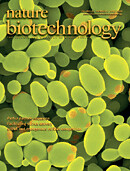 Three months ago, Nature Biotechnology (27: 514-18, 2009) published a commentary titled ‘Science Communication reconsidered’, a topic we are of course very interested in here at MedMus.
Three months ago, Nature Biotechnology (27: 514-18, 2009) published a commentary titled ‘Science Communication reconsidered’, a topic we are of course very interested in here at MedMus.
I believe the commentary is still worth a comment, because it was written by 24 (sic!) more or less well known ‘experts’ in science communication, including Matt (“framing science”) Nisbett.
The co-authored commentary — which is based on a workshop on the changing nature of science communication “focusing specifically on biotech, biomedicine and genetics” held in Washington D.C. earlier this year — describes the state of science communication in general and in the printed news media in particular, and then ends with some recommendations for how to make the situation better.
The recommendations are peculiar for at least two reasons:
First, I’m surprised that none of the 24 authors seem to have noticed the importance of science, technology and medical museums for today’s science communication arena. True, many STM museums still have their focus on science, technology and medicine of the past, but more and more museums both in Europa and North America are increasingly identifying themselves as venues for science communication.
This total lack of mention of museums is all the more surprising because the 24 authors have a pronounced trust in government-sponsored science communication. In fact, they are wedded to a mixture of old mass media, newspaper journalism and a mid-20th century understanding of government-induced democracy.
The authors believe that the alleged threat to science journalism posed by corporate science media is thus best met by increasing funding of university- and government-supported science journalism.
Accordingly they don’t have much trust in science blogging. It’s mentioned in passing, but otherwise they believe blogging is “unlikely to become an effective solution” to what they perceive as a crisis in science communication.
Well, apparently the 24 authors are not entirely up-to-date with today’s media situation. Not only has grassroot blogging (both blogs by scientists and blogs by non-scientists about science) proved to be enormously vigorous. It is also much more likely to provide a democratic balance to corporate science newsrooms.
Why this nostalgic cry for an old-style public media and gvmt-sponsored science communication policy? Part of the explanation may lie in the professional backgrounds of the 24 authors. Despite their focus on ‘biotech, biomedicine and genetics’, surprisingly many of them are affiliated with schools, departments and centres of public and community health.
My general impression is that scholars of public health tend to be more bound to have faith in goverment-sponsored health campaigns and less bound to trust bottom-up citizen health initiatives. Also that the basic rationale for much public and community health is a tendency to support government solutions for health policy issues.
If so, this co-authored plaidoyer for enhancing science communication is just classical public health communication policy writ large. I doubt a group of writers from departments of medical engineering would come up with similar recommendations for science communication. And Medgadget would probably find the commentary outrageous.
public outreachscience communication studies
Some science communication scholars believe in gvmt-sponsored science news and evidently have not heard about museums
Three months ago, Nature Biotechnology (27: 514-18, 2009) published a commentary titled ‘Science Communication reconsidered’, a topic we are of course very interested in here at MedMus. I believe the commentary is still worth a comment, because it was written by 24 (sic!) more or less well known ‘experts’ in science communication, including Matt (“framing science”) Nisbett. The co-authored commentary — which […]


